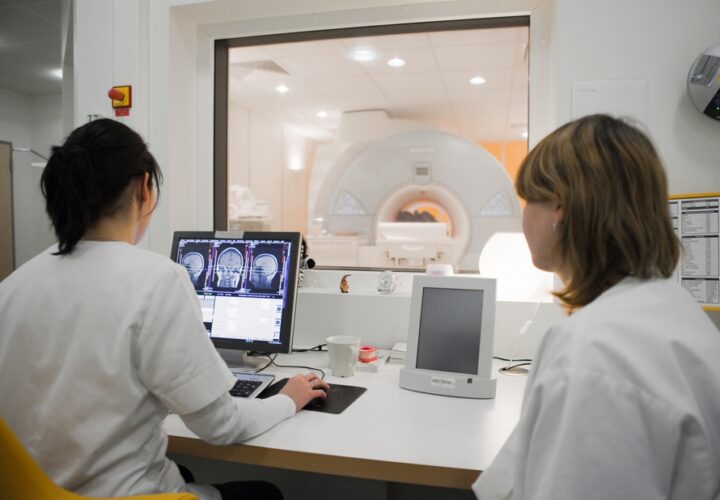New advances in brain imaging have allowed scientists from Cambridge University to track how tau, a protein that accumulates in the brain in Alzheimer’s disease, spreads throughout the brain. The study compared the spread of tau in Alzheimer’s patients to those with a rare brain disease and with a healthy control group.
Previously, scientists could only examine the build-up of proteins like tau and beta-amyloid, the other toxic protein implicated in Alzheimer’s, by looking at a patient’s brain after they died. New technology using a PET brain scan and a blood flow measuring device has allowed scientists to first scan the brain for the amount of protein build-up, then measure how the brain communicates in different regions in real time.
For this study, scientists looked at a group of 17 people with Alzheimer’s disease, 17 people with the brain disease progressive supranuclear palsy (PSP), which is another form of dementia, and 12 healthy controls.
In Alzheimer’s disease, researchers saw that tau accumulated the most in cells that were strong communicators with each other. In PSP, tau built up in cells that used the most energy, regardless of how many connections they had. The spread of tau in Alzheimer’s corresponded with a theory called transneuronal spread—the idea that tau starts in one area of the brain, then quickly spreads the others, setting off a chain reaction. Study author Thomas Cope says it works like a flu epidemic.
“If the idea of transneuronal spread is correct, then the areas of the brain that are most highly connected should have the largest build-up of tau and will pass it on to their connections. It’s the same as we might see in a flu epidemic, for example—the people with the largest networks are most likely to catch flu and then to pass it on to others. And this is exactly what we saw,” said Cope.
The difference in how tau spreads in the two diseases suggests ways scientists might target the spread of tau with a drug treatment.
“In Alzheimer’s disease, the most common brain region for tau to first appear is the entorhinal cortex area, which is next to the hippocampus, the memory region,” said James Rowe, senior author of the study. “This is why the earliest symptoms in Alzheimer’s tend to be memory problems. But our study suggests that tau then spreads across the brain, infecting and destroying nerve cells as it goes, causing the patient’s symptoms to get progressively worse.”
Researchers hope that this information will lead to more targeted clinical trials that focus on the spread of tau, though it doesn’t answer all of the questions about how tau makes its way throughout the brain in Alzheimer’s.
“While this study adds another piece to the puzzle, it doesn’t conclusively solve the crucial question of exactly how tau spreads through the brain,” said Dr. Carol Routledge, Director of Research at Alzheimer’s Research UK. “While the researchers used cutting-edge brain scanning techniques, they weren’t able to reveal all the forms of tau protein that could be playing a role in Alzheimer’s. This study gave a snapshot of the brain at one point in time, but future research can now use this innovative approach to build a more complete picture of how these diseases progress over time.”
This study was published in the journal Brain.


There is NO compelling evidence either initiates Alzheimer, only that each plays a critical role. Animal models do not test the issue, as the benefits are seen where the animals are treated to remove inappropriate expression of these proteins.